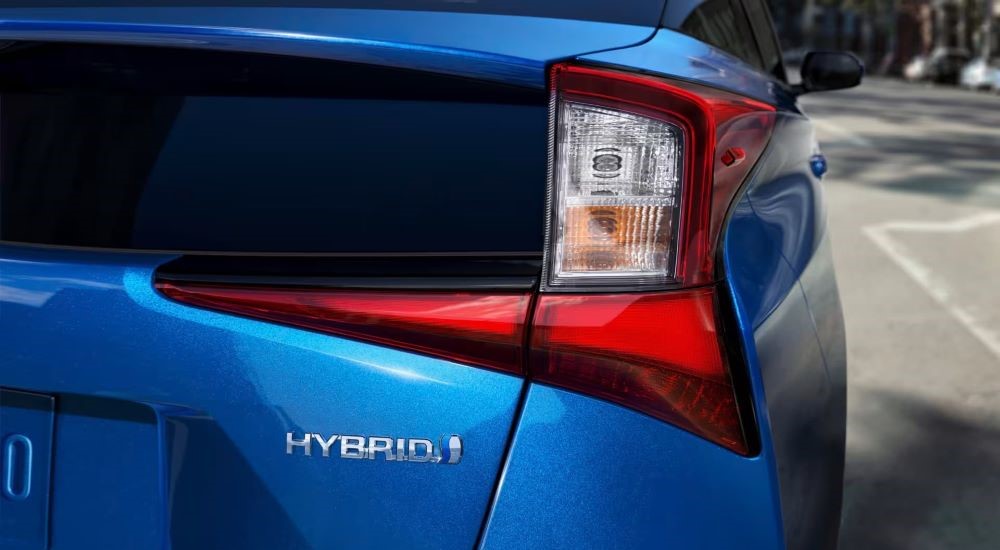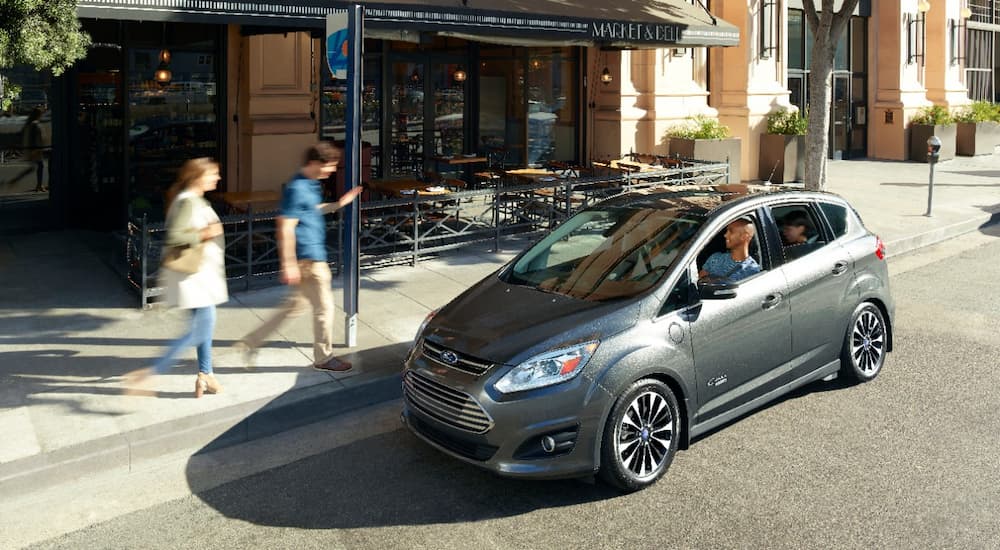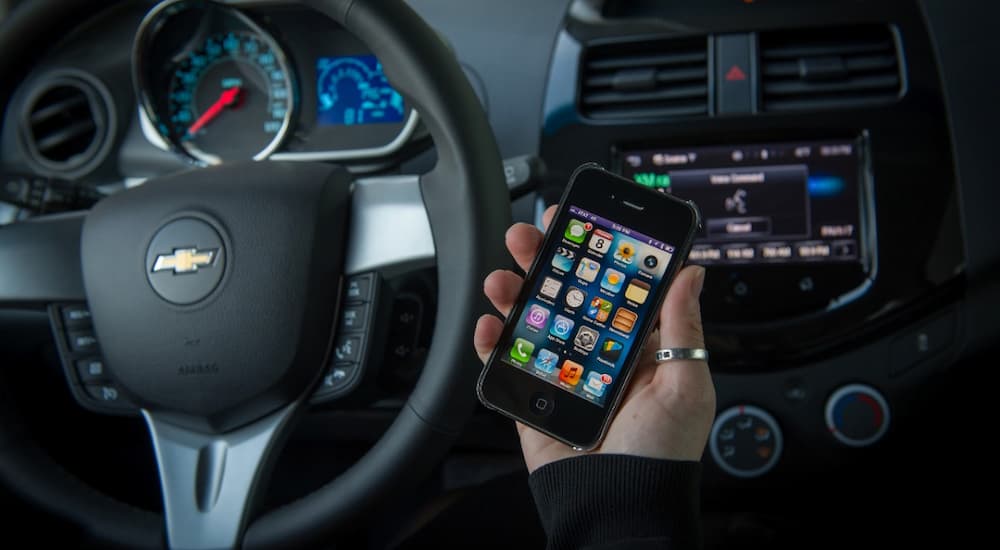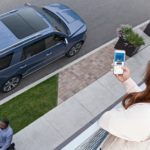Automated driving systems, wireless connectivity, and hands-free technology are all standard fare on modern vehicles. It’s hard to imagine buying a car that doesn’t let you pair your smart device to it or have an interactive touchscreen that helps guide and entertain you on your travels, but these features weren’t always present or common when shopping for new cars just a decade ago. In fact, there has been a rapid expansion in the technologies you can find in both economy and high-end cars on the market today. But if we take a trip down memory lane, we’ll find that some older used cars for sale actually include many of the features we think of as recent innovations. From safety to audio streaming, here are some of the oldest used cars that have some of the most commonly sought-after tech features among shoppers today.
2003 Volvo XC90 Offers Blind Spot Monitoring With Cross Traffic Alert
You likely won’t find many 2003 Volvo XC90 SUVs on dealer lots these days. Still, any XC90 made after 2003 comes with a feature that is most appreciated but isn’t always standard or available even on every new vehicle these days: blind spot monitoring with cross-traffic alert. This is usually a premium safety feature on higher-end trims for most newer vehicles, but on upscale nameplates, it is becoming more standard across the board. In many ways, it speaks volumes that Volvo introduced this feature as a safety measure way back in 2003.
The blind spot information system that Volvo first introduced included cameras to detect vehicles approaching the blind spots of the XC90 and utilized warning lights on the side mirrors to give the driver a heads-up. The fact that this feature has been utilized by Volvo for more than two decades gives you an idea of just how important blind-spot information systems have been for Volvo and its line-up of vehicles. Shortly after the rollout, Volvo won an Autocar Safety and Technology Award for its iteration of the blind-spot information system.

2003 Toyota Prius Hybrid Introduces Automatic Park Assist
The Toyota Prius has been a forward-thinking nameplate since it originally made its debut way back in 1997 as the first production hybrid car. But being a hybrid wasn’t the only thing that really helped it stand apart in its early years on the market. During the start of the second generation with the 2003 Prius, Toyota introduced a feature that took a lot of people by surprise: automatic parking assist.
It wasn’t just a driving aid; it was a hands-free automatic parking system where you could take your hands off the wheel, and it would automatically park for you. Utilizing electronically controlled power steering and multiple sensors, the vehicle could gauge its position and attempt to park itself. The automatic park assist was offered as an available option for the 2003 model year Prius, which only came in one trim. If you wanted the extra parking feature, you had to have it installed as an optional package.
These days, automatic park assist is quite common among many vehicles, but if you were thinking about digging deep into the used car market, the 2003 Prius is as far back as you can go to get a vehicle that has that option. The Prius is still available as a modern offering from Toyota, with the 2024 model marking the introduction of the fifth generation. However, any model between 2003 and 2024 will net you automatic parking assist, which is quite impressive when it comes to an economy compact sedan.
2008 Mercedes-Benz SLK Features NTG Audio Integration
The precursor to Android Auto and Apple CarPlay was connecting your MP3 player to your car. This feature was first implemented in the proprietary Cockpit Management and Data System, also known as COMAND, which was originally introduced as a feature for Mercedes-Benz vehicles in 1999. This operating system laid the groundwork for what would become multimedia connectivity for smart devices.
The actual first implementation of integrated media device playback came nearly a whole decade later, with the Harman Kardon NTG 2.5 feature set for the 2008 Mercedes-Benz SLK. The interesting thing here is that the NTG 2.5 system wasn’t actually the first system to have MP3 support, as that was actually available with the NTG1 system as far back as 2001. However, the NTG 2.5 came with Bluetooth pairing capabilities, so you could pair your MP3 player to the SLK and stream your music and playlists over the air without any of the cords, discs, cables, or drives that the previous COMAND infotainment suites required.
Mercedes-Benz had some very impressive infotainment options available for its higher-end trims more than 20 years ago, but Bluetooth streaming was available from 2008 onward, so various Mercedes-Benz models between then and now will come with that available feature.
2012 Ford C-Max Provides a Hands-Free Liftgate
While the Ford C-Max is no longer with us, having been discontinued as of 2018 in America, it did introduce a very worthwhile feature during its short stint on the market. The Ford C-Max was a subcompact hatchback; it was very similar to the Ford Focus, and in some markets, it was actually called the Focus C-Max. However, it was designed for those who wanted a more flexible vehicle. It was originally introduced in 2003, but it wasn’t until the second generation in 2012 that it was given the first implementation of a hands-free liftgate. It was also during the second generation that it was introduced to American shoppers.
This is quite a popular feature these days as you can readily access the rear of the vehicle without having to use your hands to open up the hatch. The Ford C-Max was the first to make this an available feature, but it came at the expense of being attached to a vehicle that wasn’t very popular during its production run, as it only managed a cumulative sales figure estimated at just under 143,000 units between 2012 and 2019. However, poor sales aside, it was still the first to introduce a hands-free liftgate, and it’s still a vehicle you can occasionally find on used car lots if you look hard enough.
2012 Chevy Sonic Brings Siri Eyes-Free Integration
Siri Eyes-Free is one of the most useful pieces of technology in modern vehicles. Being able to use voice commands to activate various features without having to take your eyes off the road is a magnificent thing; it reduces potential collisions and accidents while on the road. This feature also enables you to do all sorts of planning, setting alarms, checking vehicle health, making posts on social media, making phone calls, sending texts, finding points of interest, and navigating to a specific location, all using Siri voice commands. That’s why it’s “eyes-free” technology: you never have to take your eyes off the road to make use of all the infotainment amenities.
This was actually first featured as part of the infotainment system in GM vehicles, starting with the 2013 Chevy Sonic. Usually, features like this are introduced on high-end models first, but GM started with its most affordable vehicle, making it quite a valuable used car model if high-end tech is an alluring quality to you. It was quite a power move to include it in such a mass-marketed vehicle, and finding it on a used option is quite common. This means that the last decade of GM models gives you access to this system, which is enabled by Bluetooth connectivity.
2014 Tesla Model S Integrates Autopilot Semi-Autonomous Driving
Semi-autonomous driving is part of the new wave of features sweeping throughout the industry. Autonomous driving technology is classified into six levels, with Level 1 being basic driver assistance and Level 6 being full self-driving. Most systems are Level 2, like Tesla’s Autopilot or Chevy’s Super Cruise. Tesla’s implementation of Autopilot with the 2014 Model S is what helped propel the popularity of semi-autonomous driving into the mainstream spotlight.
You can still find plenty of Tesla models from that year available on the used market and even enjoy improved versions of the system thanks to over-the-air updates. The initial rollout of Autopilot in 2014 was bare-bones and simplified, but over the course of the years, Tesla updated the system to improve its functionality and versatility for improved semi-autonomous driving. Newer models have been enhanced with better hardware, improved sensors, and faster processors, but it’s impressive that the semi-autonomous systems were still present for the models available a decade ago.
2015 Hyundai Sonata Boasts Apple CarPlay and Android Auto
The very first version of Apple CarPlay was released with the Ferrari FF in 2014. However, a far more affordable car was the first to offer both Apple CarPlay and Android Auto: the 2015 Hyundai Sonata. The feature was attached to the Hyundai Audio Video Navigation suite, also known as the AVN infotainment center. Smartphone integration was available only on models fitted with the optional eight-inch touchscreen.
Not every 2015 Sonata with the necessary hardware was outfitted with Apple CarPlay and Android Auto off the assembly line. Thankfully, the update was (or is) free and gives you full access to phone projection once it’s installed. What’s interesting is that this is one of the newer, older vehicles available with modern tech, so it’s quite common to find used 2015 Sonata models for sale with many dealers and online sellers.
Old Cars, New Tech
Finding older vehicles housing newer tech is always a joy. It’s interesting to look back and see how far the industry has evolved in such a short time and how some of the most popular features in modern vehicles aren’t actually that old. In many ways, it gives you an idea of just how recent some of these more advanced tech features are and how many of them only came to fruition within the last decade. However, other features are older than you might think. What are some of your favorite modern tech amenities present in today’s vehicles that originally made their debut on much older model years? And what tech do you find interesting that’s widely used today that was originally pioneered many years ago?





